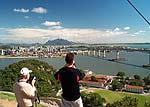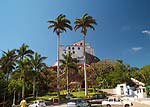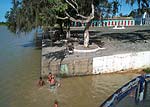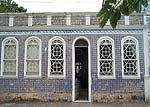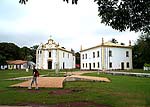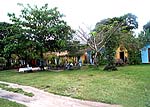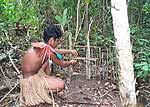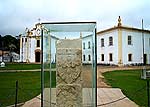GENERAL
INFORMATION Main Page About Us Transfers RIO CITY TOURS Summary Bed & Breakfast in Santa Tereza RIO STATE TOURS Summary Paraty Buzios & Arraial do Cabo Itatiaia & Itamonte BRAZIL TOURS Summary Ouro Preto & Tiradentes Pantanal & Bonito Amazon & Pará Porto Seguro & Caravelas Paranagua & Iguaçu Tutoia & Lençois Maranhenses Capivara & Sete Cidades Natl. Parks Alter do Chão & Santarem SOUTH AMERICA TOURS Bolivia and Peru Iguaçu & Buenos Aires |
||
| |
||
|
![]()
| Porto Seguro, Abrolhos and Caravelas | |||||||||||||||||||
| This
tour leaves Rio by car with overnight stops at
Vitoria,
Conceição
da Barra, Caravelas and finally Porto Seguro.
Round trip is about 2800 km with many points of interest to be visited:
Campos - where the first electrical energy plant was built and sugar
cane alcohol plants are producing sugar
and alcohol for cars, Vitoria (capital of Espirito Santo State);
Coffee,
rubber
trees,
papaya,
black
pepper,
eucalyptus,
sugar cane and cocoa
plantations, oil
pump jacks,
granit
and marble export wholesalers ,
indian reservations, whales,
coral reefs, old portuguese colonial buildings with
tiles
used to protect the facades, and of
course a lot of contrasts typical
of this country. Interaction
with locals is always present and stimulated during the trip partially
done along dirt roads. |
|||||||||||||||||||
|
|
||||||||||||||||||
|
Vitória After visiting Campos, Piúma, and Guarapari - where you can fish for white Marlin - a short visit to Vitoria: this nice city between the ocean and hills is an important port where most of the coffee and iron is exported. After a short city tour, we cross the new bridge with a fantastic view over Vitoria and drive uphill to the Penha Convent. |
N.S.da
Penha Convent - Vila Velha Because it was built on the top of a 154 m high granite hill, you will have a panoramic view of the whole area, including Vitoria, Vila Velha, the mountains where Santa Tereza, with the biggest Hummingbird sanctuary is located, the Tubarão Port, the Praia da Costa and the new bridge contrasting with Nature in between the green Rain Forest. |
||||||||||||||||||
|
|
||||||||||||||||||
|
São
Mateus and Conceição
da Barra |
Caravelas |
||||||||||||||||||
|
|
||||||||||||||||||
| Porto
Seguro Famous worldwide as a tourist spot, this nice town offers an intensive night life at the "Passarela do Álcool" with plenty of sea food and the famous "capeta" drink, with guaraná powder. Other attractions are the coral reefs, Cidade Alta, Trancoso, and the recently opened indian reservation "Pataxó da Jaqueira" highly recommended to be visited. |
Trancoso This village lies on a platform about 50 m above sea level with an exotic view over the beaches and the ocean. The old colonial coloured houses and the church form the "Quadrado", the central area of the village. For adventurers it is recommended that you visit Caraiva, along a complicated dirt road and sometimes floodded areas to be crossed with extra care. |
||||||||||||||||||
|
|
||||||||||||||||||
| Pataxó
Indian Reservation This recently opened Indian Reservation is the best option for those who would like to have a close contact with the Pataxós Indians still left and living almost the same way as in the 1500's. A two hour walk along a trail will show how they hunt animals to survive, their constructions, experience a folkloric dance performance after praying and maybe even have lunch with them. |
Historical
Center - Cidade Alta This is where Porto Seguro (safe port) began as the first settlement in Brazil. Many of the colonial buildings are well preserved, some ruins are still there conveniently fenced as the Jesuit College. The marble Land Property Marker brought by Gonçalo Coelho in 1503, now encased in glass, is one of the most important historical relics in the Brazil. |
||||||||||||||||||
Pedro Novak - Private Tours - Rio de Janeiro

